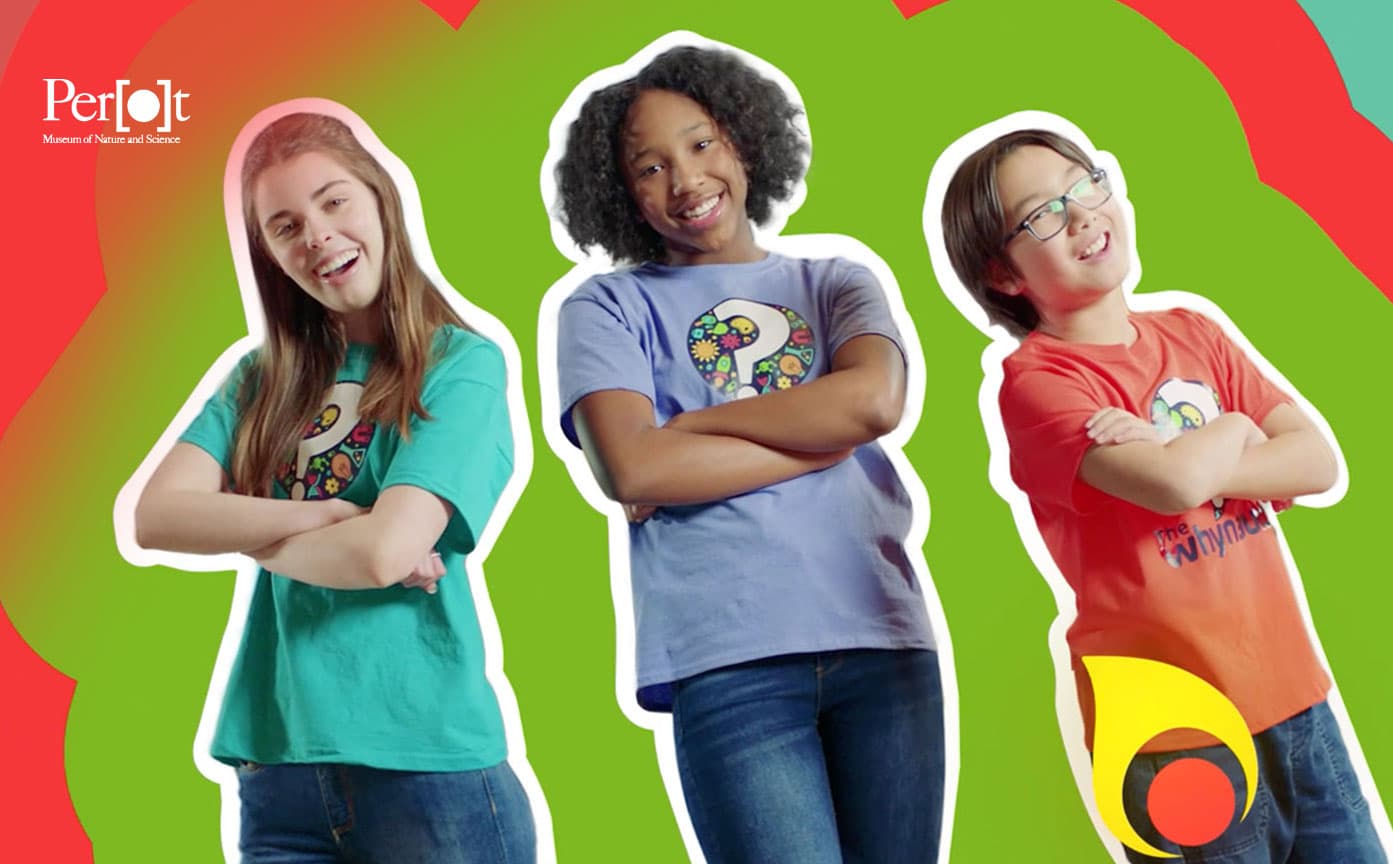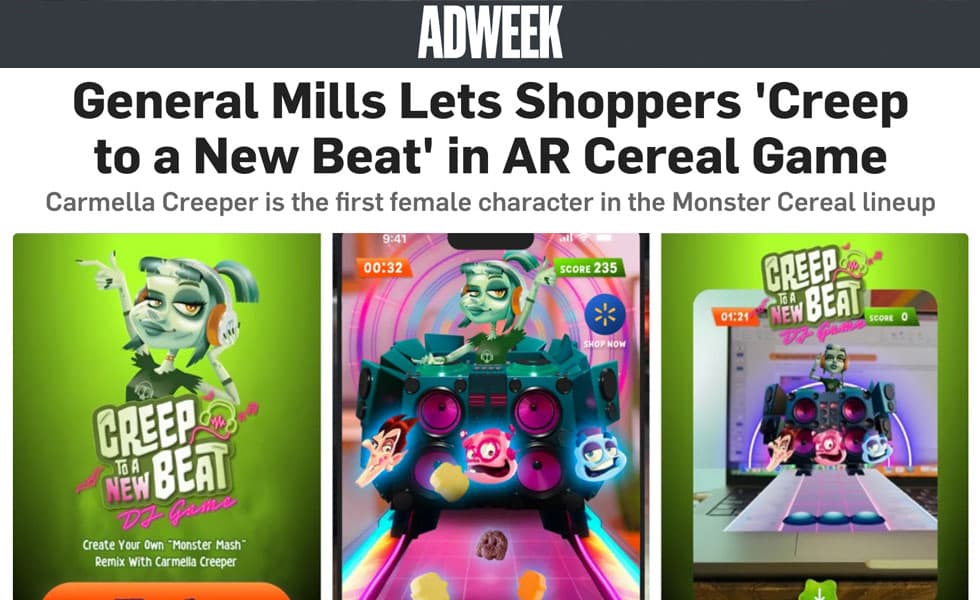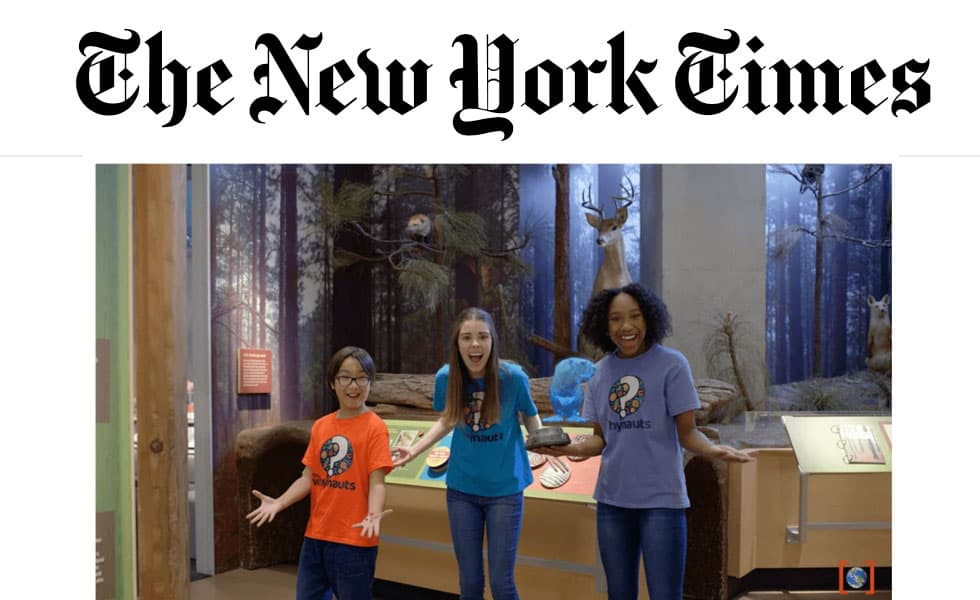Like most businesses, the Perot Museum of Nature and Science faces many challenges due to the COVID-19 pandemic. In particular, schools cannot take educational field trips and museum visits. The leadership at the Perot Museum wanted to create a new way to connect with educators and administrators, students, and families to continue their mission – to inspire minds through nature and science!
The Perot Museum partnered with Groove Jones to develop an interactive visual component for its STEM (Science, Technology, Engineering, and math) education programming. The result was a highly engaging and fun video series aligned with TEKS (Texas Essential Knowledge and Skills) that brings a new learning experience to students across Texas.
“Collaborating and partnering with the Perot Museum’s education team, Groove Jones is producing creative, educational, fun, and engaging content that we will take into classrooms across our community,” said Jessica Chavez, Chief Learning Officer at the Perot Museum of Nature and Science.


The Whynauts series is not just a collection of virtual museum tours. It features adventures both inside the Perot Museum and anywhere across Texas! Yes, using digital visual effects, the cast travels to all points around the state in the Whynauts QuadCopter.

They also use their Imagination Station, a 3D holographic machine that instantly transports the Whynauts to different environments and situations.

“We have worked with the Groove Jones team over the years, and they continue to be a creative and technical partner. We know we can turn to them to come up with amazing content and creative thinking that helps us achieve our mission,” said Dave Humphries, Chief Operating Officer at the Perot Museum of Nature and Science.
Creating A Series
Groove Jones pitched the creative concept to the Perot Museum’s leadership team. Dale Carman, a co-founder and the Executive Creative Director of Groove Jones, the Groove Jones team, and writer Bill Cochran came up with The Whynauts.

The team worked with the Perot Museum educators on key learning goals. Each episode would focus on a theme and tell a story that would connect with the audience.

Introducing The Whynauts! They are young scientific educators who are energized by learning about how science applies to the world around us—near and far. The Whynauts are great observers, learners, and teachers, enthusiastically driven to know “why” the world is like it is.

This was a turnkey operation for Groove Jones. Our team wrote, storyboarded, designed, cast, designed, and built the props and set pieces. Directed, filmed, edited, and created all the 3D and visual effects. We even wrote the theme song and scored the original music!
The Pilot Episode: Amazing Adaptations
The pilot episode, shot on location in January 2021, is about adaptations and how they help plants and animals survive across Texas. It is part of a complimentary 10-episode preview sponsored by the Perot Foundation, the Lamar Hunt family, and PetroCap through the end of 2021.

The episode includes a bilingual, standards-aligned curriculum and educator resources delivered straight to your inbox.
The program supports students in class and through virtual learning with fun supplemental activities. Teachers can use the series as a resource for science learning and STAAR review!
Creating the Series: a Behind the Scenes Look – Set Pieces and VFX
Groove Jones designed and collaborated with a local production designer to create several props and even the cockpit of the Whynauts QuadCopter! These all provide practical hands-on actions, augmented with digital visual effects. Below are early pencil sketches of some of the set pieces.


Some earlier design iterations of the QuadCopter.

Below is a more final 3D CGI model of the QuadCopter used for special exterior visual effects shots.

The Simulation Station quickly became the cast’s favorite place. Here, the Whynauts step into a holo-deck machine that virtually transports them into any simulated environment or scenario.

In the pilot episode, Kennet steps into several different ecosystems to see different living organisms and environments… cold, hot, and even wet, which is a little too “real” for Kennet.

In another scene, Kennet travels to the Trans-Pecos region of Texas, where he learns about how different plants and animals have adapted to survive due to the dry climate. Here is where he gives us a lesson about how cactuses (or cacti) have survived. He also encounters a western diamondback rattlesnake, which was digitally added to the scene.

The Whynauts hop into the QuadCopter to visit another Texas region—the Blackland Prairies—to learn about predators and prey. The viewer is shown the different animals using 3D animation and digital hologram effects.


One of the Whynauts’ tools is a hand-held holographic disk that allows them to see a hologram of the subject they are talking about. Below are some of the VFX Styles we created for the holograms.

The team travels back to the Perot Museum, where they step into the Pineywoods exhibit to discuss the fantastic adaptations of beavers.

Designing the Brand Logo and Graphics Package
The Groove Jones team created the graphic package for the series. This included an animated introduction to the show, lower thirds, and animated transitions between scenes. The logo design and subsequent graphics tie seamlessly together.


Wardrobe designs – we had to develop the look and feel for the cast and their wardrobe.

The title screen animation.


Brain Break is one of the animated transition shots created for the series.


As the Whynuats prepare to fly the Quadcopter to their next destination, we created an easy-to-understand, fun, and whimsical animated map showing their current location, travel route, and destination.


A Bilingual Production – Built from the Ground Up
Every episode contains bilingual (English/Spanish) speaking, graphics, subtitles, plus resources for teachers and students in collaboration with the team at Cara Mia Theatre.


Filming On Location
Dale Carman directed the series. The production took place on location at the Perot Museum. We established a sound stage within one of the museum’s flex spaces where all the green screen visual effects elements were captured. These would later be used in the various digitally created Texas regions featured in the show.




Episodes Guide
Episode 1: Paleontology
Ideal for grades 3-5
Follow along with The Whynauts as they discover fossils, experience Earth’s changing el medio ambientes / environments, and explore the Perot Museum’s T. Boone Pickens Life Then and Now Hall with a real Paleontologist!




Episode 2: The Human Body
Ideal for grades 6-8
Join The Whynauts as they immerse themselves in the Perot Museum’s Being Human Hall, learn about the internal structures of organisms, and see just how incredible the human body really is.





Episode 3: Staying Alive
Ideal for grades K-2
Join The Whynauts as they immerse themselves in the Perot Museum’s Being Human Hall, learn about the internal structures of organisms, and see just how incredible the human body really is.




Episode 4: Plate Tectonics
Ideal for grades 6-8
In this episode, the Whynauts learn about the theory of plate tectonics / teoria de las placastectonicas and why the earth’s surface never stops changing.





Episode 5: Engineer It
Ideal for grades 3-5
Create and iterate with The Whynauts as they use the Engineering Design Process to solve a problem with an engineer/diseñar from Texas Instruments.




More Information about the Whynauts and the Perot Museum of Nature and Science
More info about the Perot Museum of Nature and Science can be found here – https://www.perotmuseum.org/programs-and-events/all-ages/whynauts/index.html
Award Winning Production
This production has won the following awards.









